Huegelkultur: What is It?
The traditional huegelkultur (hill culture) is a unique European method of preparing raised garden beds for growing vegetables, flowers, or fruit-producing trees or bushes. Why build raised beds? Experienced gardeners know that raised garden beds warm more quickly in the spring providing for earlier and more reliable germination of seeds, and warmer soil tends to promote faster growth. The traditional huegelkultur is constructed with a base of logs carefully arranged and subsequently covered with overturned sod and a layer of garden soil. Why use logs? Wood is a natural sponge and holds moisture, resulting in lowering the necessity for watering plants. As decay progresses, the wood also holds increasing amounts of water. Almost immediately after contacting or being covered with soil, wood begins to decay in a long soil-building transformation,a process to convert the cellulose to soil in a natural process which involves flora and fauna, microbes, mold, fungus, insects, water, and minerals which work almost magically to form natural soil, provide fertilizer, and micro nutrients for plants.The How, Wherefore and Why of the Quintessential Hugelkultur
"The Great Huegelkultur Experiment is An Attempt to Imitate Nature at her finest."
In nature, trees die, and rot on the forest floor with the help of insects, mold, dampness, plants, bacteria and enzymes. Within a year or two, depending upon the species or variety of tree, the wood may be broken down to wood fibre. The remains may be spongy, separated fibre, crumbling, completely broken down to organic soil. Fungus, lichens, mosses, molds, mycelium of mushrooms and the roots of small plants as well as insects feed on, convert, and colonize cellulose in wood waste. Eventually the log is completely converted to useful soil. *Note that some tree bark types such as that found on white paper birch bark will take longer to deteriorate and are not ideal for the uppermost layers in a huegelkultur structure.Choice of Tree Species
In our great huegelkultur experiment, we chose Poplar , Aspen, Balsam Fir, Tag Alder, White Spruce, and some Willow logs because they were available. Other species such as maple, birch, apple wood, cottonwood, butternut, ash, dogwood and others will suffice as well as poplar and soft pines, but species such as tamarack, cedar, redwood, locust, ash and oak should perhaps be bypassed for this purpose because they naturally resist decay for years. Trees and logs may be freshly-cut, dry, or in a state of early decay. For ease of handling, I purposely cut 4' sections of dry logs from dead trees and large branches already on the forest floor, some dry and in an advanced state of decay--a choice made to imitate, accelerate, and take advantage of the natural process of decay and the aggressive recycling of wood observable in nature.Site Location and Preparation
The site selected for the huegel is sunny, mildly saucer-shaped (north to south) and *sloped gently to the south east. The excavation was oriented north to south to optimize sunlight across the raised bed. * Why sloped? The specific site was chosen because it tends to direct and collect surface-water collection toward centre of the hugel which proved advantageous. Sod was removed and set aside, and a wedge-shaped, level excavation was cut into the slope. (higher at the back than the front) The logs were collected and piled about three feet in height for the full length of the excavation 'trench' resulting in a neat 'log pile' about 24' long and *4' wide. *( I used 4' short logs instead of full-length logs because Paul Bunyan and his Blue Ox were not available to pull full-sized logs out of the bush. Many of the logs chosen were also already fragile from rot, and too easily broken. ( I hauled the lighter, more-convenient 4' lengths with my ATV buggy )Special Considerations for the Great Huegelkultur Experiment
The front (shallow) edge of the site for the huegelkultur was excavated to just below the surface level to encourage the collection of some water. On wet, rainy days, a puddle of water collects at that location, and just as predicted, the log pile soon absorbs the water. One of the benefits of huegel gardening, is the subsequent slow release of water from the logs, and less frequent watering is required for plants growing on this unique raised bed. A space was also left behind the pile of logs rather than packing them tightly against the higher back wall of the excavation. The space was left to allow the compacting of garden waste, organic matter, piles of old mulch, old hay, lawn clippings, etc. to create an organic 'sponge' to absorb heavy rainfall, —but also allow and enable the slow and continuous transfer of water into the ends of the short logs. Creative water management was the objective. Meantime, the waste organic material also acts like a compost pile and slowly converts to rich organic soil which may ultimately be heaped advantageously upon the growing surface of the structure at some point in the future. During the building process, the logs with the greatest decay were reserved for the topmost layer, —hopefully to accelerate the conversion of the topmost layer from wood cellulose to deep garden soil faster. Considering that decayed wood holds moisture better, and close contact with garden soil would speed up decay, it seemed logical to optimize the transfer of microbes, flora and fauna to already-decayed wood cellulose rather than start with fresh, solid wood either dry or green on the uppermost layers. Remember, the Great Huegelkultur Experiment is an attempt to imitate nature at her finest. A minor amount of topsoil was added to gaps between logs as the pile was constructed in anTransition From Huegel to Garden Bed
The wood pile was topped with a layer of highly decayed fibrous wood and duff, rotten leaves, etc. (some almost soil) collected judiciously from the forest floor. Suitable material from long-decayed logs and ancient, rotting stumps completely decayed, covered with mosses and lichens was also incorporated--to encourage the retention of moisture. The idea was to fill the cracks between the uppermost logs, transfer moisture down into the logs, not only duplicating in advance the progression of decay-- but artificially accelerating the decay of the uppermost layer of the wholeAddition of Garden soil and Compost for Natural Fertilizer Provided A head start.
To get a head start on the first growing season with the huegelkultur experiment, a half-inch layer of mature (well-decayed) compost was added. Probably not a bad idea anyway since compost is an excellent addition to any garden soil. ( Compost = kitchen waste, coffee grains,crushed egg shells, peelings, leaves, flower trimmings,greenery etc.) The rich compost was spread over the top of the huegelkultur to provide natural fertilizer, a few extra nutrients and a head start for the very late first growing season. Our gardens are completely organic with no artificial fertilizers; I wanted the huegelkultur to follow that organic tradition for optimum soil health. Finally, a 3" layer of the original virgin topsoil was placed on top, all cracks between logs on the top surface filled, and the surface raked and smoothed. A lot of shovel work!The First Growing Season
Construction of the huegelkultur was very late in the first growing season and I did not have time to plant seeds on the structure. I took that opportunity instead to add some additional soil in some spots, mulched the surface, and plucked weeds that developed. I did manage to transplant a few Tiny Tim Cherry tomato plants to try out the benefits of mulching the surface of the huegelkultur heavily with old hay. The tomato plants responded, immediately, grew quickly and produced very well, as you can see. * Note the unusually prolific production of these compact tomato plants growing the first season on the huegelkultur. *It was a very dry summer. It seems we must have done something right, or perhaps Cherry tomatoes just love hay mulch. In this photo, also note the extremely heavy growth of tall wild grasses taking advantage of the favourable natural soil conditions and extra nutrients apparently found behind the hugelkultur. The Second Growing Season For the second growing season on the huegelkultur, corn, purple, beans, peas, kale, and onion sets were planted directly in the huegel soil. Tomato plants and cabbage bedding plants were also transplanted into the beds. Interestingly, tomatillos also sprouted , so we must assume there were viable tomatillo seeds in the initial application of compost. Additional mulch was placed around the plants as they grew in size. Three full-sized early cabbage heads were produced, and onions, lettuce, peas and beans were all successful. Corn grew over 4' high. Without exception, all plants grown on the huegelkultur were healthy and free of insects. Some damage was received from curious resident bunnies and a groundhog. *Note that no root crops were planted because of the minimal depth of soil. Observations and Conclusions derived from the great Huegelkultur experiment:- The huegelkultur concept is a valid and viable method of building raised vegetable beds and can be very productive. Growth potential for vegetables is high.
- Using short logs in this design did reduce the planting area and limited the total growing area somewhat, as soil tended to fall off the edges of the garden bed. A potential and simple solution might consist of a 6" wide board tacked to the ends of the uppermost logs as a temporary retainer until the soil progressively settles and becomes more stable with time.
- With selective placement of a few, larger top logs, deeper soil might be established in select areas allowing root crops such as carrots to grow satisfactorily.
- The first growing season for this experimental bed was very dry, the second very wet, so the actual value of the log structure as a water release mechanism could not be reasonably or fairly evaluated.
- For the design used, it may be necessary to establish additional moisture control by the placing of logs and additional soil, or alternatively an 'organic pack' of mulch along the front face of the short logs, to discourage the loss of moisture by evaporation during extended periods of hot, dry weather.
- A thicker layer of topsoil initially would allow growth of virtually any root crop vegetable or other plants on the huegelkultur.
- The insulating characteristics of wood are likely a substantial benefit in allowing raised bed soils to warm up faster in spring and beneficially reduce the depth of frost penetration beneath the raised bed.
Durability of the Huegelkultur
The expected lifespan of a huegelkultur structure depends on a number of factors and may include any or all of the following factors and other unknowns:- The species of trees (logs) used ie. decay resistance of wood
- Spacing/sorting of the logs and air spaces included
- Whether or not soil was included within the log structure
- Initial condition of logs when incorporated into the structure, including decay, the time of year new trees were cut (spring, full of sap vs. winter, dry) etc.
- Moisture content of the wood, soil, and ambient air including rainfall
- The amount of soil covering the logs
- The type of plants grown on the huegelkultur
- Geographical location, the immediate local environment, seasons and weather
- Other factors such as insect activity, colonization by mosses, molds, etc.


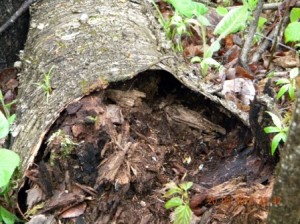
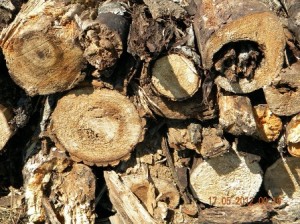



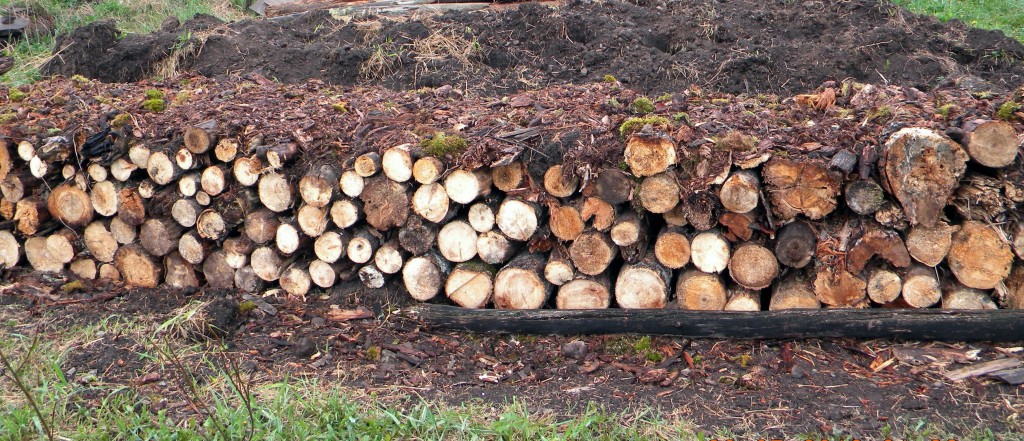
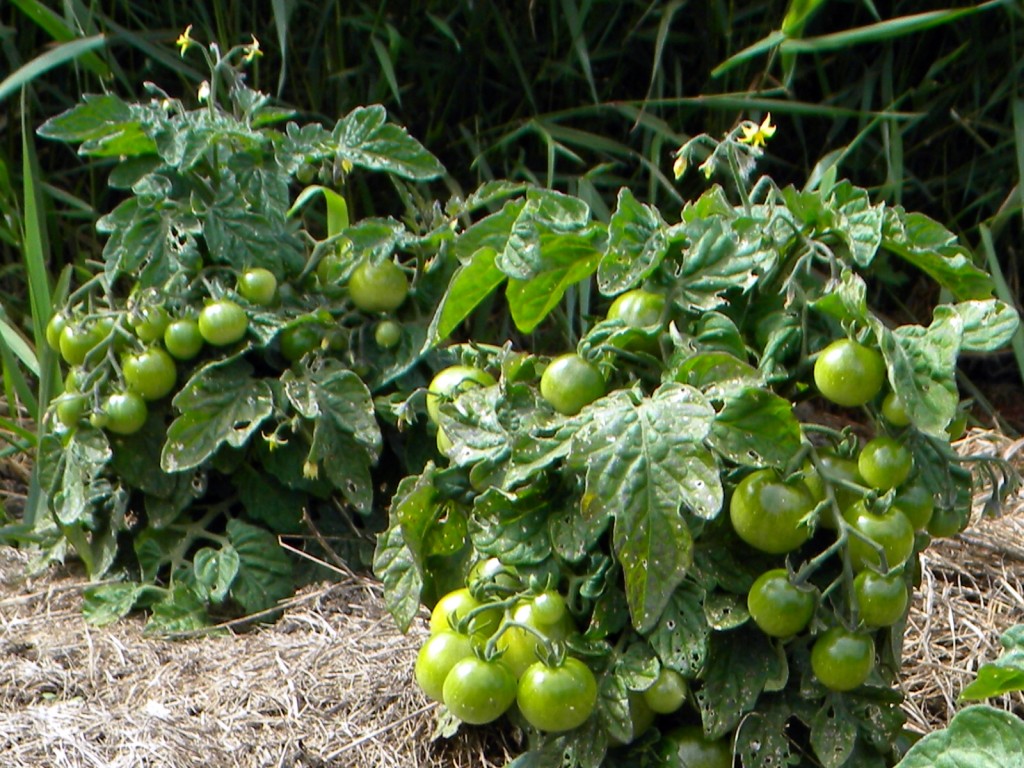

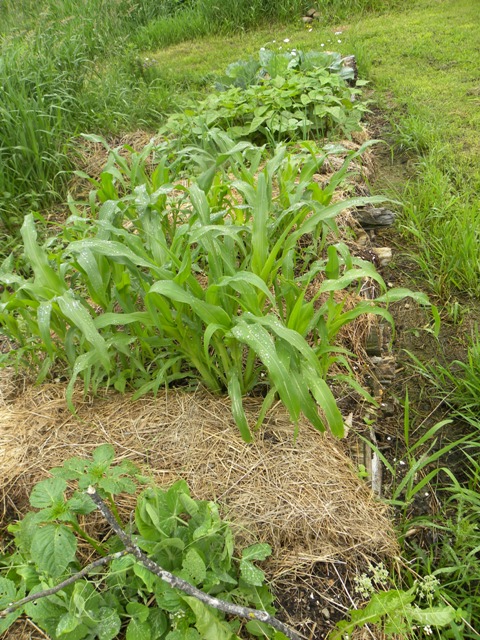
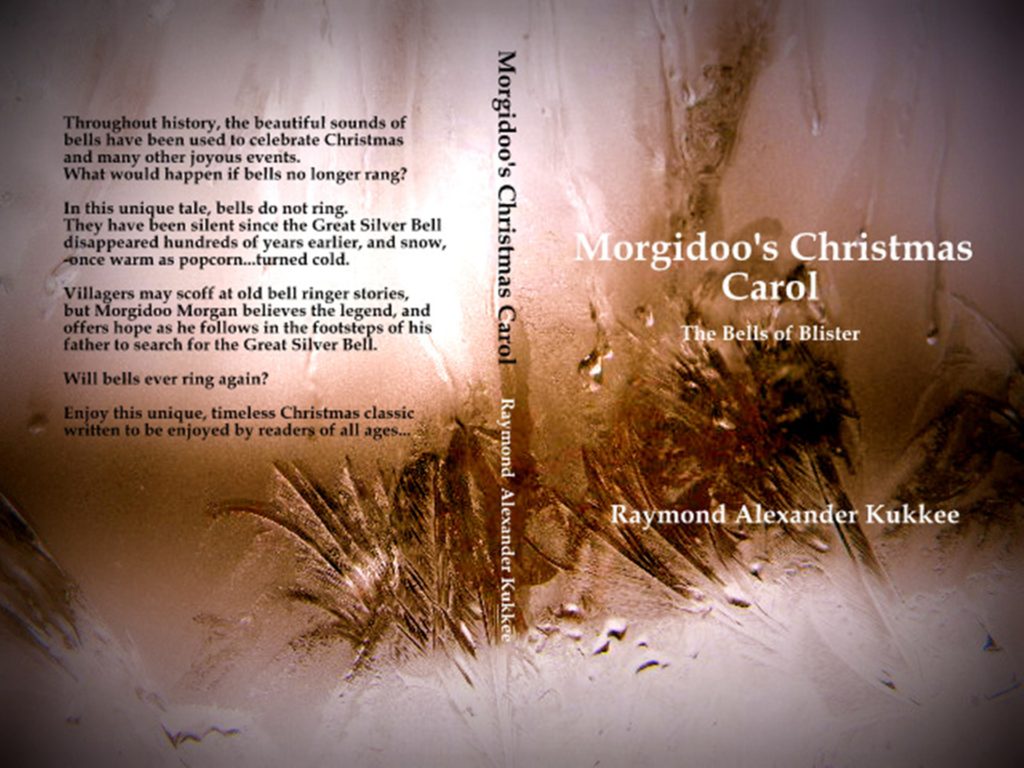
Pingback: The Huegelkultur Experiment - Incoming BytesIncoming Bytes
Hi Ray,
This is fantastic that you are doing this project! What a great way to truly test it out – and wonderful you are having such success. I like that you end on a positive note and promise to keep us updated for upcoming years too. Well done 🙂
Thanks, Christyb, I think it was a great start, a good year, and I will be improving on the structure itself and the soil-building process. It’s a great use for old rotten logs that are unsuitable for other uses too –and the veggies taste great! Thanks for commenting, Christyb! “:) ~R
i may have to call my ongoing experiments by some simple french name–like ‘tout-y-va’ pronounce toot-y-vah) meaning anything goes..and it does, the reconstructed hillside is the fertile result of gathered organic products around town–inoculated with a few shovels full of woodside dirt for excellent humus conversion..some free shredded tree pulp from the tree cutter’s jobs around here..and lots of household composting materials, you know; hopeless cotton socks, sink rags past their prime, banana peels, mallard bones after broth, turkey feathers, yes it could all invite the local dogs and racoons, but i bury it all under the wood and sprinkle cayenne atop it works everytime, haven’t seen those pesky creatures since! i must post photos of my miracle grow results–ok- i only borrowed the name, but really, isn’t it all a miracle huegelkulturally?
hi Nadine! Yes, all of that organic material being collected and composted will do well, and will do so so quite huegelkulturally, there’s a good word for it. Shredded wood is excellent, it will act like a sponge much like the forest floor and hold moisture.
It sounds like you have exactly the right idea–precise form is quite irrelevant. A humus pile, a large, toute-les organiques-included arrangement ‘tout-y-va’ haha….. is a fine huegel–and seeded with a few shovels of rich soil, it will indeed do precisely what it is supposed to do. Add larger pieces of wood, at the bottom when you need to expand the size of it, with progressively smaller logs and brush–and pull active soil down over it, voila! Add some wood ash for potash if possible too. Yes, and please do post some photos, I’d really like to see your method and progress, let’s hope the raccoons and deer don’t eat it all on you “:) Thank you so much for commenting, Nadine! Happy huegeling! ~R
What a great idea! Please do keep us posted on the progress of your novel garden bed. Living as I do in an apartment, this project will always be beyond me, but it’s great to hear of your gardening success 🙂
Thank you, Penne, will do! It’s always nice to dream and scheme about gardening, even if it ‘s in pots on the balcony kind…..so… A Mini-huegelkultur on the balcony (?) Thank you for commenting “:) ~R
Hi, love what youve done!
I have been stockpiling timber from my house renovation.
I have some old hardwood timber, do you think that would be ok? I live on a mountain near the Goldcoast in Australia and i will be making the bed about 20 -30ft from my house, do i need to worry about white ants?
Hopefully you will receive my email as its niw February 2017
I
Hi, Anna Snelling! Welcome to Incomingbytes.com ! It’s always nice to see another gardener interested in this project.
If you have old timbers, , partially-decayed or that are easily prone to decay, they should be fine to use for a huegelkultur unless they have been painted or treated with chemicals. In that instance I would not use them.
The success of that project will depend on the species of wood, some species of cedar, tamarack –and I imagine gum and locust trees do not decay down fast enough to work well. The progressive decay of the wood under the soil/crumbled wood chips layer,, mosses, flora and fauna and conversion of wood fibre to soil feeds the roots of the plants. A lot also depends upon the moisture levels available too. That being said, you can use the logs as a base, add a soil layer, and go for it–eventually any untreated wood will decay.
About the white ants, –are you referring to what we call termites? Carpenter ants which destroy wood in homes? They might actually be helpful to break the wood down, but if you have ant problems in your district, you may wish to build the project further from the house. Here in NW Ontario we have ‘red ants’ and some ‘wood eating ants’ that enjoy moving into log piles.
I imagine you may have to water more in your location, unless you have damp soil or more rain in your immediate area. The tomatoes in my photos never required manual watering.
Best wishes for your project! Do visit again! Thank you for your comments…and Happy Gardening! ~R